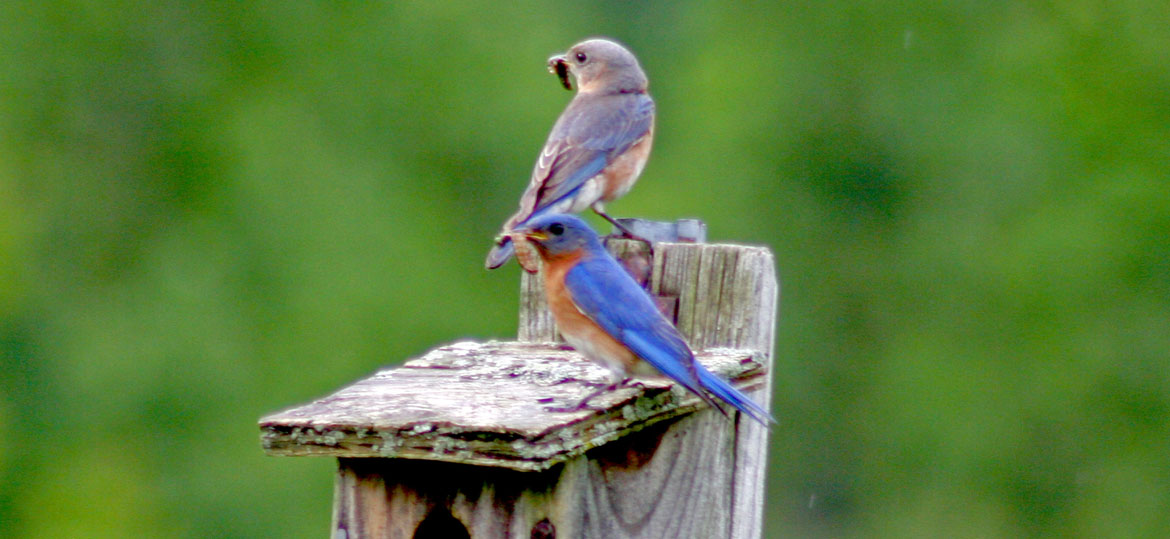
The Eastern Bluebird (Sialia sialis) is a beautiful bird, native only to North America. With its sky-blue feathers, it has long been considered a sign of happiness and good luck for those who are fortunate enough to spot one. In the northeast, however, it is becoming as uncommon as its habitat.
Habitat
The Eastern Bluebird lives in open, grassy spaces and prefers pastures and farmlands with scattered trees. These areas provide excellent foraging habitat as well as natural nesting opportunities. The bluebird needs natural tree cavities, old woodpecker holes, or bird boxes for nest building. Competition for these nest sites can lessen the bluebird's breeding success. Starlings and house sparrows will often use these cavities for nests, chasing the bluebirds away.
This species is very social, at times gathering in flocks of 100 hundred or more. The bluebird is partially migratory, travelling southward when environmental conditions, such as temperature and food supply, are not suitable.
Reproduction
Most bluebirds spend winter in the southern portion of their range, and return to Vermont in February through July to breed. The males return first to establish and defend territories from other males. The females, will find a male to mate with and a suitable habitat for nesting. They prefer open woodlands, farms, and orchards.
The females construct nests using materials such as stems, twigs, and feathers and line it with fine grass. The nests can be in a natural tree cavity, an old woodpecker hole or a bird box at a height from three to 20 feet above the ground. There, the females will lay four to six light blue eggs from May to July. After a gestation period of 12 to 14 days, the eggs hatch and the young are born, eyes closed and completely dependent on their parents. By the time they are three-to five-weeks old, they fledge, or learn to fly, and leave the nest. Bluebirds usually nest two or three times during a season.
After nesting, bluebirds gather together in flocks. Some birds will overwinter in southern Vermont, but they have been reported further north in the Champlain Valley. They regularly band together in large groups during winter. Eastern Bluebirds generally fly to the southeastern part of the United States when conditions in the northeast become intolerable. In spring, they will return to their northern breeding territories to mate and nest again.
Diet
The Eastern Bluebird has a varied diet, consisting of both plant and animals, making it an omnivore. Two thirds of its diet consists of insects such as beetles, grasshoppers, caterpillars and worms. The bluebird perches high on a branch and swoops down to catch insets that are on the ground or in vegetation below. It also eats a variety of fruit, including berries and grapes, especially in late summer and early fall.
Management
People became concerned about Eastern Bluebirds' future when bluebird numbers dropped considerably in the last 100 years. Scientists and citizens researched this problem and discovered possible means of helping the bluebird. By designing bluebird boxes for nesting and placing them in appropriate locations, habitat has been improved and populations are starting to recover.
Another way habitat can be improved by landowners is through proper management of grasslands and the presence of large dead or dying trees. By planting species such as dogwood, red cedar and hawthorn, you can enhance food for bluebirds.
Status
The Eastern Bluebird is fairly common in Vermont in its preferred habitat of agricultural lands. It is present in good numbers in the summer in these areas and, to a lesser extent, in the winter as well. In the last century, the population has experienced a considerable decline but, with recent efforts, it seems to be increasing again.
